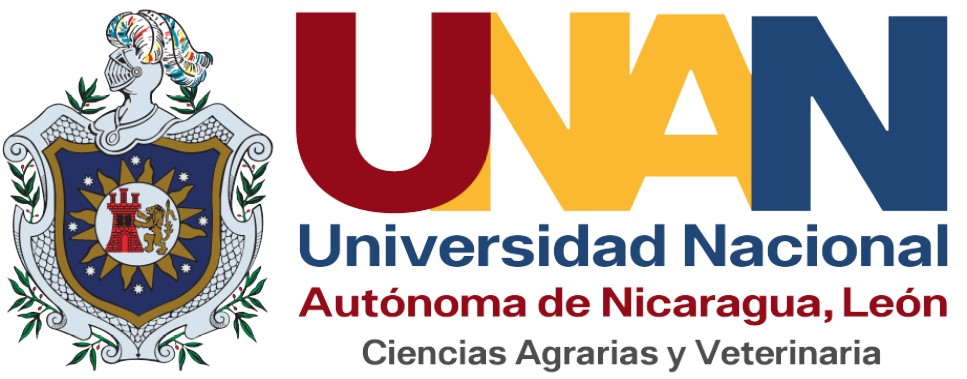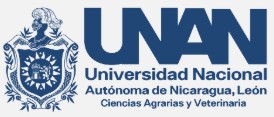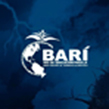Pathogenicity of entomopathogenic fungi in termites in Moringa oleifera plantations, Posoltega Nicaragua
DOI:
https://doi.org/10.5377/ribcc.v7i14.12851Keywords:
Nasutitermes corníger, Entomopathogenic, Termites, Moringa oleífera, Metarhizium anisopliae, Beauveria bassianaAbstract
Termites are pests of economic importance in agroforestry and agricultural systems. The research was carried out at the Fidel Castro Ruz Reference Center of the Agricultural Technological Institute of the Posoltega municipality in agreement with UNAN-LEON. The objective was to determine the incidence and identify the species of termites present in the Moringa oleifera plantation and evaluate the pathogenicity of entomopathogenic fungi under field conditions. The research is of a quasi-experimental type, 3 treatments were evaluated Beauveria bassiana with a concentration of 3.6 x 107 conidia / ml and Metarhizium anisopliae with a concentration of 2.28 x 106 conidia / ml and chemical treatment (Cypermethrin), dose of 6cc / liter of water. In a population of 16 plants with termite hives per treatments for a total of 48 experimental units. The application of the treatments was carried out by drilling each hive, in its four cardinal points (north, south, east and west) spraying with a manual knapsack pump. Efficacy was determined by the biological effectiveness formula. 39% of the Moringa oleifera moringa population was found to be infected by termites. The species of termites present in the Moringa oleifera plantations was Nasutitermes corníger. The effectiveness of the treatments presented sig. Statistics (P = 0.000) being Cypermethrin that presented the best percentage of effectiveness with average values of 96% followed by M. anisopliae with effectiveness of 24% and B. bassiana with 7%. The percentages of sporulation presented sig. Statistics. (P = 0.0033) B. Bassiana with 31% and M. anisopliae presented 69%.
Downloads
Metrics
References
Abbott, W. S. (1925). A method of computing the effectiveness of an insecticide. J. econ. Entomol, 18(2), 265-267.
Aguerro Alaniz, J. G., Escoto Calderón, J. N., & Juárez Zapata, E. A. (2009). Evaluación de la cepa 114 de Beauveria bassiana y la cepa, Monte Rosa, de Metarhizium anisopliae para el manejo de Cosmopolites sordidus. Campos Agropecuario 1 y 2 de la UNAN León. (Tesis de grado Universidad Nacional Autónoma de Nicaragua, León).
Ashton, L. A., Griffiths, H. M., Parr, C. L., Evans, T. A., Didham, R. K., Hasan, F. y Eggleton, P. (2019). Termites mitigate the effects of drought in tropical rainforest. Science, 363(6423), 174-177. DOI: 10.1126/science.aau9565
Bellotti, A. C., Arias, B., Vargas, O., & Peña, J. (2002). Pérdidas en rendimientos del cultivo de yuca causadas por insectos y ácaros. La yuca en el tercer milenio sistemas modernos de producción, procesamiento, utilización y comercialización (B. Ospina & H. Ceballos, eds.). CIAT-CLAYUCA, 204-219.
Blackwell, M. y Kimbrough,JW. (1976). Un estudio del desarrollo del hongo Coreomycetopsis oedipus asociado a las termitas. Micología, 68 (3), 551-558. https://doi.org/10.1080/00275514.1976.12019941
Constantino, R. (2001) On-Line Catalog of the Living Termites of the New
World. Departamento de Zoología, Universidad de Brasilia. Brasil.
Costa, ADC. (2000). Acción de los aislados de hongos sobre termitas xilófagas Nasutitermes globiceps (Isóptera: Termitidae. (Tesis de maestría, Facultad de agricultura Luis de Queiroz, Universidad de Sao Paulo Piracitaba). https://doi.org/10.11606/D.11.2019.tde-20191218-114411
Erazo, O., Quintero, B., Molina, Y., y Encinas, O. (2019). Evaluación de productos comerciales a base de Cipermetrina sobre cryptotermes brevis (Walker) en Pinus caribaea, Eucalyptus urophylla y Acacia mangium
Fernandes, Â. , Bancessi, A. , Pinela, J. , Dias, MI , Liberal, Â. , Calhelha, RC , Ćirić, A. , Soković, M. , Catarino, L. , Ferreira, ICFR y Barros, L. ( 2020 ). Perfiles nutricionales, fitoquímicos y actividades biológicas de Moringa oleifera Lam. partes comestibles de Guinea-Bissau (África occidental) . Química de los alimentos , 128229. https://doi.org/10.1016/j.foodchem.2020.128229
Fernández Collado, C., Baptista Lucio, P. y Hernández Sampieri, R. (2014). Metodología de la Investigación. Editorial McGraw Hill.
Gajú M., Bach C. y Molero R. (2015). Orden Isóptera. Revista IDE@ - SEA, 49 (1-17). URL: http://sea-entomologia.org/IDE@/revista_49.pdf
García Centeno, L., Téllez Obregón, O, y Mason, S. C. (2007). Uso eficiente del nitrógeno por 16 líneas de sorgo en Nicaragua. La Calera 8(11), 9-48. URL: http://repositorio.una.edu.ni/id/eprint/2288
González M. J. (2014). Evaluación de la patogenecidad y esporulación del hongo Metarrizhum anisopliae (Metsch.) Sorokin cepa Metagreen en concentración de 10 c/ml sobre adulto de mosca blanca (Bemisia tabaci) en el laboratorio de hongos Entomopatógenos del Campus Agropecuario de UNAN-León 2011-2012. (Tesis de grado Universidad Nacional Autónoma de Nicaragua, León).
Govorushko, S. (2019). Economic and ecological importance of termites: A global review. Entomological Science, 22(1), 21-35. https://doi.org/10.1111/ens.12328
Henderson, G. (2001). Termites under the weather. Louísíana agricultura experíment statíon magazine. Vol. 44, No. 2, Spríng.
Jaja-Chimedza, A. , Graf, BL , Simmler, C. , Kim, Y. , Kuhn, P. , Pauli, GF y Raskin, I. ( 2017 ). Caracterización bioquímica y propiedades antiinflamatorias de un extracto de semilla de moringa (Moringa oleifera) enriquecido con isotiocianato . PLoS One , 12 ( 8 ), e0182658.
López. R. A., De Zayas E., Fernandez A.,y Triguero M. (2002). Evaluación de cepas de Beauveria bassiana contra los descortezadores (Coleóptera: Scolytidae) del género Ips en plantaciones de pinos (Pinus caribaea Morelet). Revista de Protección Vegetal 17(2), 138.
Maes, J. (1990). Catálogo de isóptero en Nicaragua. Revista Nicaragüense de entomología 13(1):13-20 URL: https://mapadetermitas.org/uploads/library/LIB_F1D850-FFC7F2-39F68D-5EE921-679D6B-63E917.pdf
Malpica F., Andara C. y Varela C.W. (2010). Especies de Nasutitermes (Isoptera: Termitidae) en la Cumaca, municipio San Diego, estado Carabobo, Venezuela. FARAUTE Ciencia. Y Tecnología. 5(2): 44-55
Martinez, G. L., Martinez G., A., Molina A., J. P., y Zuluaga, J. J. (2009). Manejo de Termitas o Comejenes en el cultivo de caucho. (1ra edicion ed.).
Montes Rojas, C., Muñoz A, Terán, V.F., Prado, F.A & Quiñonez, M. A. (2010). Pathogenity evaluation on Salanum quitoense Lam. Clones Acta Agronómica, 59 (2), 144-154
Moreno, L. (2003). Evaluación de la eficacia de control de Beauveria bassiana (Balls) Vuill en picudo negro del plátano Cosmopolites sordidus (germar) (Coleóptera, Curculionidae) campus agropecuario UNAN, León. (Tesis de grado Universidad Nacional Autónoma de Nicaragua, León).
Pérez, Levastida, M. (2014). Control de termitas con entomopatógenos (trabajo de diploma) Universidad Central Marta Abreu de las Villas, Santa Clara. 43 p.
Raven P.H., R.F. Evert & S.E. Eichhorn.(1999). Biology of Plants. 6ªEd. New York. W.H. Freeman and Company. 944 p
Reyes-Becerril, M., Angulo, C. and Silva-Jara, J. (2021), Antibacterial and immunomodulatory activity of moringa (Moringa oleifera) seed extract in Longfin yellowtail (Seriola rivoliana) peripheral blood leukocytes. Aquaculture
Research, 52: 4076-4085. https://doi.org/10.1111/are.15245
Rodríguez Flores, O. y Jiménez Martínez, E. (2019). Órdenes de insectos de importancia agrícola en Nicaragua: Identificación y diagnóstico.
Rust, M. K. y Su, N. (2012). Managing Social Insects of Urban Importance. Annual Review of Entomology, 57: 535-575
Santillán. J, (2004). Especies de termitas en plantaciones comerciales de mango (Mangifera indica l.) en la costa sur de Jalisco. (Tesis para obtener el grado de Maestro en ciencias agrícolas y forestales. Universidad de
Guadalajara. Zapopan, Jalisco). 99p
Su, N. Y. & Scheffrahn, R. H. (2000). Termites as pests of buildings. In Termites: evolution, sociality, symbioses, ecology (pp. 437-453). Springer, Dordrecht.
Downloads
Published
How to Cite
License
Copyright (c) 2021 Ibero-american JournalL of Bioeconomy and Climate Change e-ISSN 2410-7980

This work is licensed under a Creative Commons Attribution-NonCommercial-ShareAlike 4.0 International License.
Copyright © 2025 Rev. iberoam. bioecon. climate change. National Autonomous University of Nicaragua León (UNAN-León), Knowledge Area of Agrarian and Veterinary Sciences / Specific Area of Agroecology and Agribusiness / Center for Research in Agrarian Sciencies. Academic Directorate. Research Department. Publication and scientific events Unit.












 EDITORIAL
EDITORIAL e-ISSN
e-ISSN


 COPYRIGHT
COPYRIGHT This work is licensed under a Licencia Internacional
This work is licensed under a Licencia Internacional 












